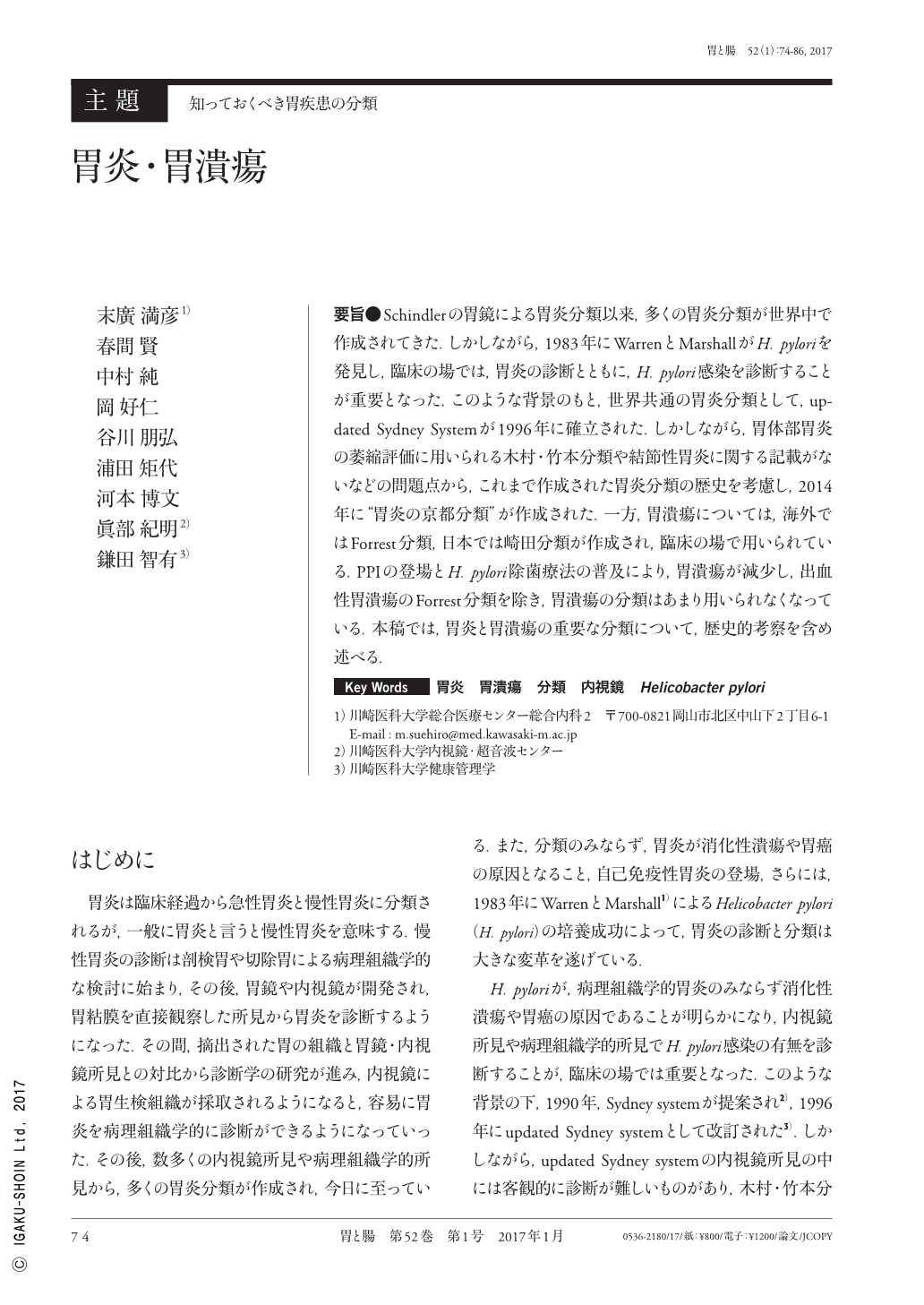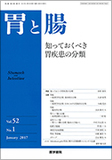Japanese
English
- 有料閲覧
- Abstract 文献概要
- 1ページ目 Look Inside
- 参考文献 Reference
要旨●Schindlerの胃鏡による胃炎分類以来,多くの胃炎分類が世界中で作成されてきた.しかしながら,1983年にWarrenとMarshallがH. pyloriを発見し,臨床の場では,胃炎の診断とともに,H. pylori感染を診断することが重要となった.このような背景のもと,世界共通の胃炎分類として,updated Sydney Systemが1996年に確立された.しかしながら,胃体部胃炎の萎縮評価に用いられる木村・竹本分類や結節性胃炎に関する記載がないなどの問題点から,これまで作成された胃炎分類の歴史を考慮し,2014年に“胃炎の京都分類”が作成された.一方,胃潰瘍については,海外ではForrest分類,日本では崎田分類が作成され,臨床の場で用いられている.PPIの登場とH. pylori除菌療法の普及により,胃潰瘍が減少し,出血性胃潰瘍のForrest分類を除き,胃潰瘍の分類はあまり用いられなくなっている.本稿では,胃炎と胃潰瘍の重要な分類について,歴史的考察を含め述べる.
Since Schindler's classification of gastritis by gastroscopy, numerous classification systems for gastritis have been established worldwide. However, it is important to diagnose not only gastritis but also Helicobacter pylori infection. After the discovery of H. pylori by Warren and Marshall in 1983, the updated Sydney System, a globally used classification system for gastritis, was established in 1996. However, this system has several shortcomings. For example, the Kimura and Takemoto classification system for atrophic corpus gastritis and the endoscopic diagnosis of nodular gastritis were not included in this classification system. In 2014, the Kyoto classification of gastritis has been newly established under the consideration for the history of classification of gastritis. Currently, the Sakita classification system is used to classify gastric ulcers in Japan, while the Forrest classification system is established in many other countries ; both systems are used in clinical practice. The incidence of gastric ulcers has declined, and the Sakita classification system has become less popular than the Forrest classification system due to the common use of PPIs and H. pylori eradication therapy. In this review article, important classification systems for gastritis and gastric ulcers and their history are discussed.

Copyright © 2017, Igaku-Shoin Ltd. All rights reserved.


